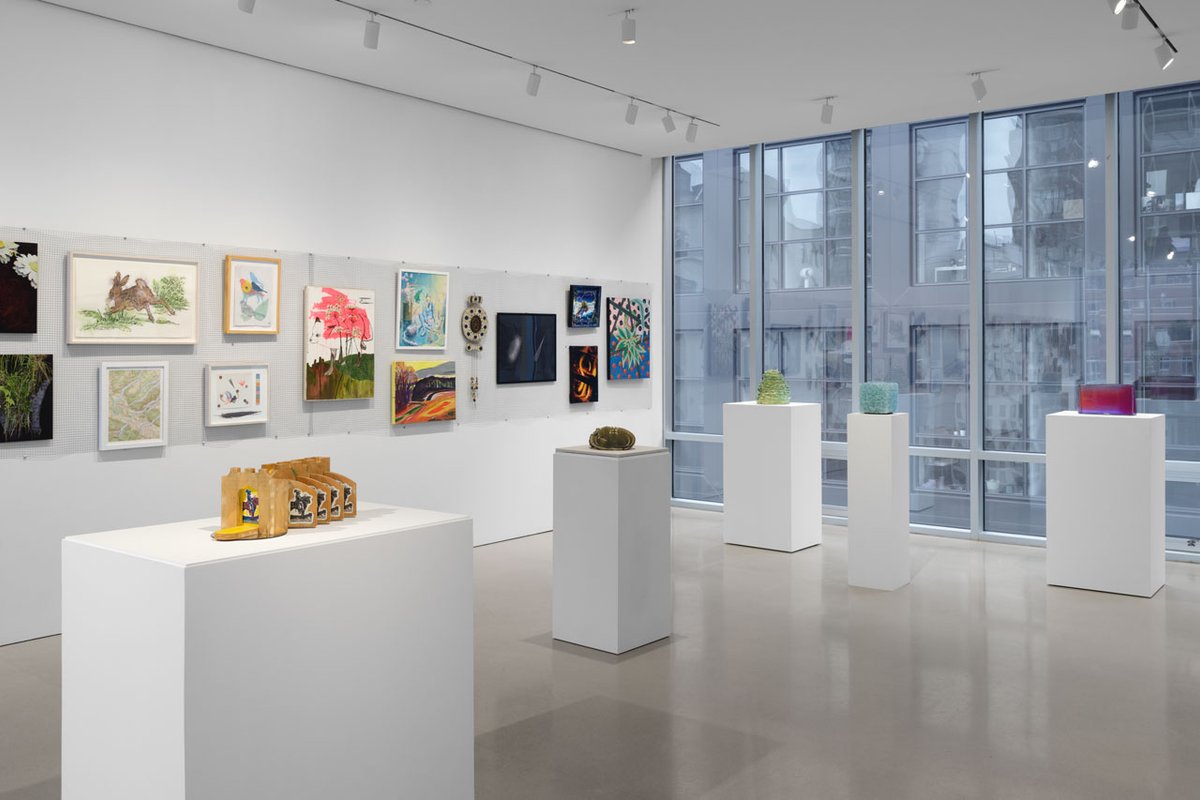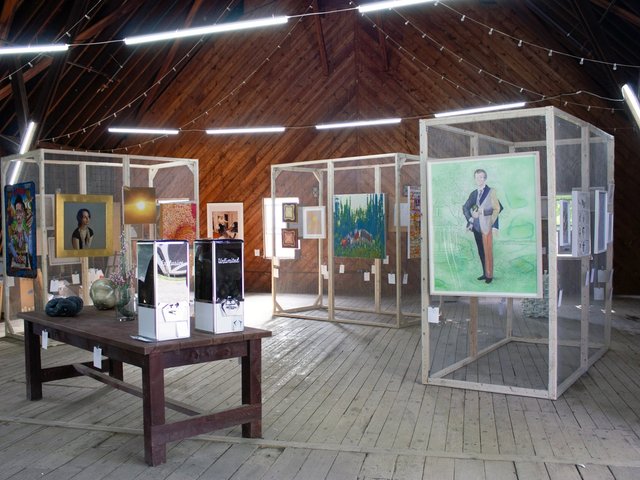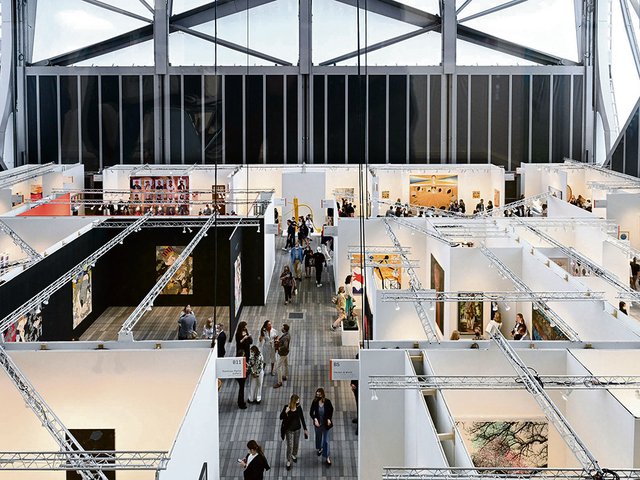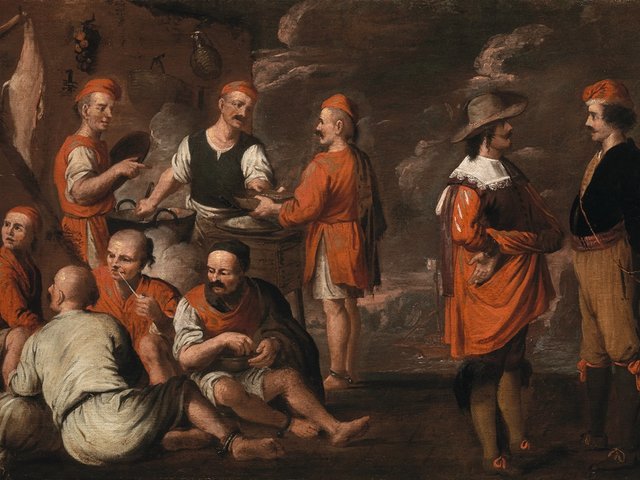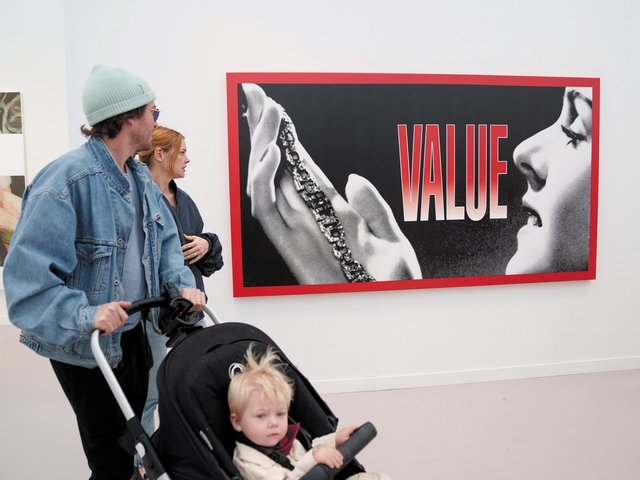Zero Art Fair appears normal enough. Held last week in a white-walled gallery towering above Chelsea at the Flag Art Foundation’s ninth-floor headquarters, collectors perused paintings, sculptures and other works. But after finding something they liked, instead of handing over bank details, buyers presented a paper card and took their art home with no money changing hands. Under that system, 179 works were placed with a total retail value of $537,500, with 14 additional works on hold, fair organisers said on Monday (14 July).
In an increasingly flooded art-fair calendar, Zero Art Fair sets itself apart with a novel premise—what if art were free? “With some strings attached,” adds cofounder William Powhida. He and Jennifer Dalton, both artists, organised the fair around an innovative contract under which “buyers” take a work home from the fair with no monetary transaction while allowing artists to keep some rights over their work. Powhida and Dalton see the fair as a solution for artists with storage challenges and as a way to democratise art-collecting.
“Bill and I, as mid-career artists, know our community is storing a lot of our old work," Dalton says. “We have all this work that is five or ten years old, or work that's already been exhibited. It's like, ‘Wouldn't it be nice for it to get out of a box and into someone's home who would love it?’”
This year, Flag Art Foundation and Gagosian sponsorships have underwritten fair costs and allowed for paying participating artists $100 honoraria. Instead of galleries, more than 300 artists applied directly to participate, with about 90 being accepted.
In a twist on the traditional art-fair transaction, works acquired at Zero Art Fair legally transfer over a vesting period of five years. During that time, the collector can display the work as they wish while the artist maintains some rights, including being able to sell it for cash. In such a case, the collector who acquired the work at Zero Art Fair would have the right of first refusal. The contract also stipulates that after the five-year vesting period, if the collector sells the work, the artist would be owed a 50% cut of the first sale price and 10% resale royalty rights thereafter.
“There are some critical points we’re trying to make about the art market and how it works,” Powhida says. “We’re pointing out that art isn't scarce. It's also a goal to help bring more people to art and give them an opportunity to collect by taking down some of the barriers of price.”
The first edition of Zero Art Fair—held in a barn in Elizaville, New York, during Upstate Art Weekend—was a resounding success, Powhida and Dalton say. The fair “sold” 178 works over two days, representing $536,913 in potential retail value.
For this year’s edition, organisers put out an open call to potential collectors who identified themselves in one of three categories: needing help to live with art, being able to sometimes afford art or in a position to help others afford to buy art. (Most collectors reported being in the second category.)
From there, a randomising software selected 220 participants, allocating greater weight to the first two categories, then assigned time slots. However, there were loopholes for collectors who could not bear to risk leaving without their preferred work—almost all artists who took part in Zero Art Fair indicated they would be willing to sell directly to a collector if they wished, instead of entering into a contract.
During our interview at the press preview on Tuesday, 8 July, Powhida glanced down at his phone and announced the first real sale of the fair had just been finalised: a ceramic wall sculpture by Lexa Walsh sold for $650. By Friday, six more works would be acquired the traditional way for a total of $4,040—by the artists Jenny Vogel, Lynn Sullivan, Bob Szantyr and Mary Negro.
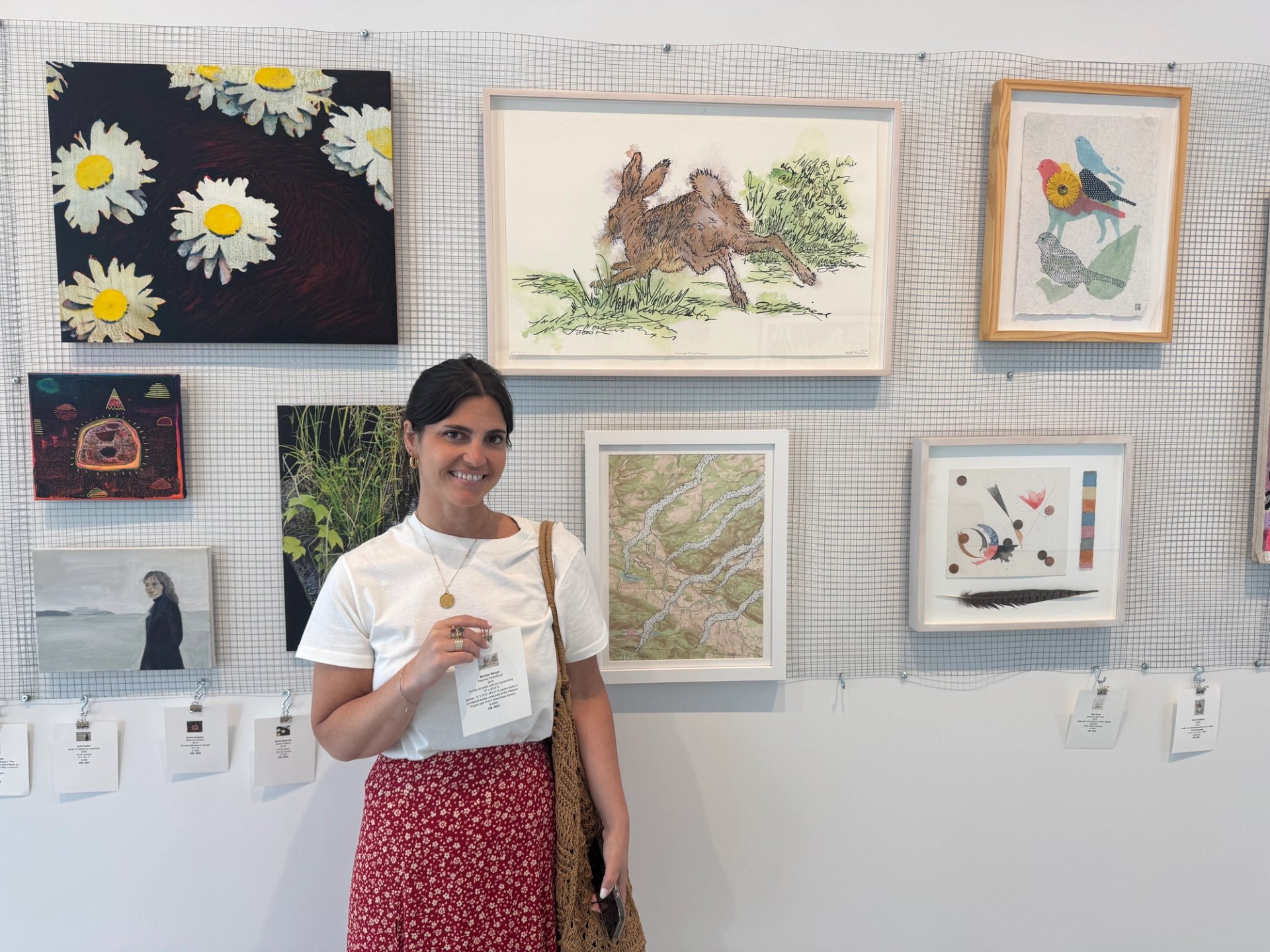
Library Street Collective associate director Hallie Greaner at Zero Art Fair Photo by Carlie Porterfield
On Friday afternoon, I shadowed Hallie Greaner, an associate director at the Detroit gallery Library Street Collective, as she made her way through Zero Art Fair. Her friendships and connections in the art world have allowed her to acquire work of her own at more affordable prices, she said. She had marked herself as sometimes being able to afford art.
“I don’t buy things for investment,” Greaner said. “I can’t store art, so I have to collect what I want to actually live with.”
A photograph that Greaner liked during the preview was already taken—“That makes me want it more,” she whispered—but she was also drawn to Michael Waugh’s Planned Parenthood (2016), an acrylic painting of a rabbit running away from the viewer with ink overprinting. You can just make out words like “fund”, “medically”, “health” and “women” throughout the work. Waugh had used found text from a bill designed to strip support from Planned Parenthood, Powhida and Dalton told Greaner. Greaner liked that the artist used comedy and what appeared on the surface to be an innocent children’s illustration to explore a serious topic. An on-site handler wrapped it up for her upstairs, and she was out the door and hailing a cab in just over an hour from when she arrived.
“Art fairs in general have put a bad taste in people’s mouths,” Greaner said. “A lot of people are not there for the art. That’s what’s great to see about this—it’s not about the environment or how sexy Miami Beach is. It’s about art.”
But Zero Art Fair is not a solution to the greater art market’s woes, as Dalton and Powhida are quick to point out. It cannot solve speculation or replace the existing traditional art-fair model. But they hope it can serve as a reminder that market prices can (and should!) be decoupled from art’s actual value. And the format could just as well work in other cities, they say.
“There are practical things that we'd like to see for artists, too, like resale royalties,” Powhida says. “The more contracts we put out in the world that potentially could end up in court or help set a precedent or push for federal legislation on resale royalties—it’s another longer term goal. And of course, we always advocate for public funding for artists.”


